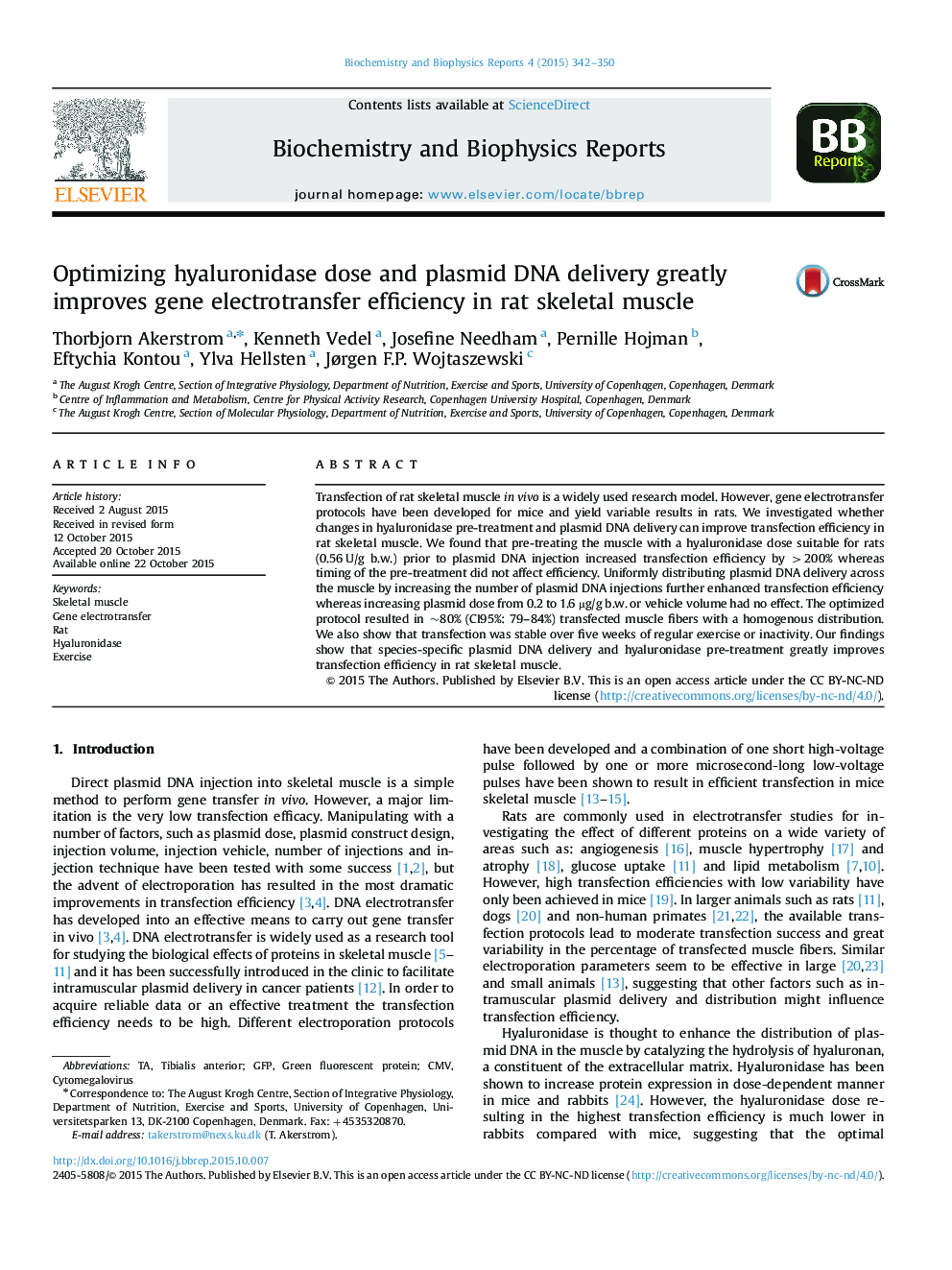| Article ID | Journal | Published Year | Pages | File Type |
|---|---|---|---|---|
| 1941835 | Biochemistry and Biophysics Reports | 2015 | 9 Pages |
•Parameters for effective in vivo skeletal muscle transfection are species specific.•Pre-treatment with a rat-specific hyaluronidase dose greatly improves transfection efficiency.•Delivering plasmid DNA more uniformly enhances transfection efficiency in rat skeletal muscle.•Transfection efficiency is not improved by increasing plasmid DNA dose.•Exercise training does not affect transfection stability.
Transfection of rat skeletal muscle in vivo is a widely used research model. However, gene electrotransfer protocols have been developed for mice and yield variable results in rats. We investigated whether changes in hyaluronidase pre-treatment and plasmid DNA delivery can improve transfection efficiency in rat skeletal muscle. We found that pre-treating the muscle with a hyaluronidase dose suitable for rats (0.56 U/g b.w.) prior to plasmid DNA injection increased transfection efficiency by >200% whereas timing of the pre-treatment did not affect efficiency. Uniformly distributing plasmid DNA delivery across the muscle by increasing the number of plasmid DNA injections further enhanced transfection efficiency whereas increasing plasmid dose from 0.2 to 1.6 µg/g b.w. or vehicle volume had no effect. The optimized protocol resulted in ~80% (CI95%: 79–84%) transfected muscle fibers with a homogenous distribution. We also show that transfection was stable over five weeks of regular exercise or inactivity. Our findings show that species-specific plasmid DNA delivery and hyaluronidase pre-treatment greatly improves transfection efficiency in rat skeletal muscle.
